Dong Thap is famous for its valuable historical and cultural relics and unique culinary arts, especially Sa Dec ornamental flower village - the flower capital of the West. Sa Dec Flower Village (Dong Thap province) originated as Tan Quy Dong Flower Village, a traditional craft village more than 100 years old. Located on the bank of Tien River, windy all year round, fertile with alluvium, full of sunshine, and known as the land of ornamental flowers, Dong Thap is blessed with tourism potential. Coming to Sa Dec Flower Village, you will admire the breathtaking scene with countless flowers blooming and fragrant.
Introduction to Sa Dec Flower Village
The history of Sa Dec Flower Village dates back to the early 20th century. At that time, in the Tan Quy Dong area, there were only a few households growing flowers to decorate for Tet. Seeing that the flowers bloom beautifully in the soil, gradually the number of flower-growing households increased and the business purpose was determined. Later it spread to areas such as Sa Nhien Canal, An Hoa Ward, Tan Khanh Dong commune, and Ward 3 of Sa Dec City. To date, the total flower growing area is more than 500 hectares, with over 2,300 households, and 2,000 different ornamental flower species, becoming one of the largest ornamental flower gardens in the Mekong Delta and the South.
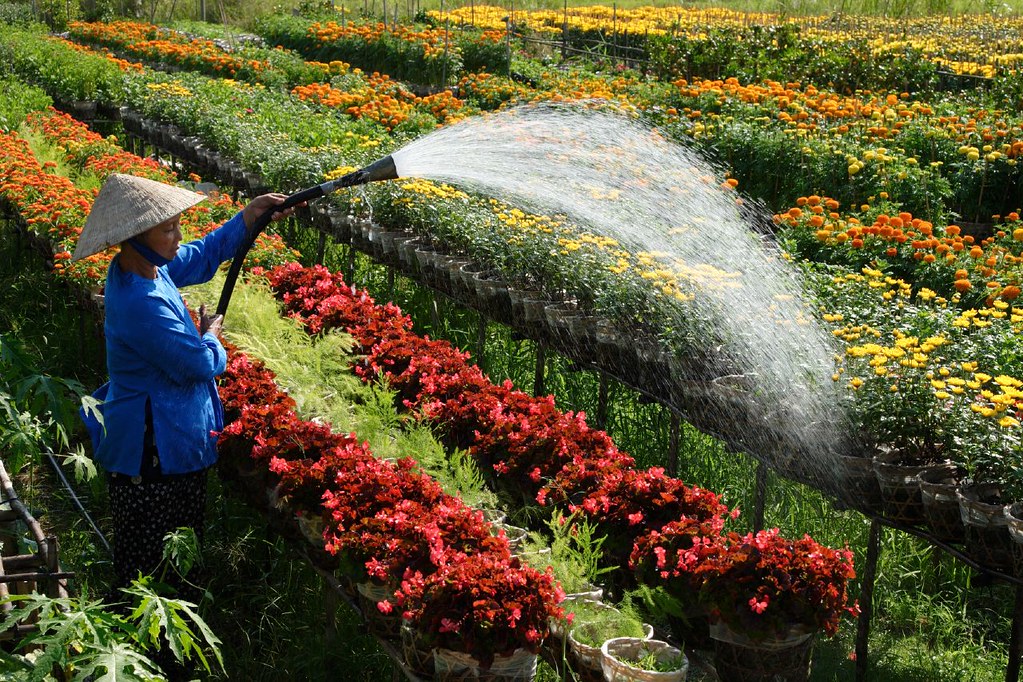
Local farmers are taking care of flowers
Previously, Tan Quy Dong Ornamental Flower Village only did business according to the "hereditary" model and was not invested properly, so it went through many ups and downs. After entering the integration phase, with the opportunity to apply scientific and technical advances, Tan Quy Dong flower gardens have prospered and received infrastructure investment, adding many new rare flower varieties, building a tissue breeding center, and establishing a wholesale market to consume ornamental flowers... these factors have actively contributed to helping Tan Quy Dong flower village develop, expand and enter its golden age.

Sa Dec Flower Village has originated in the early of 20th century
Today, the characteristics of Sa Dec flower village still retain its distinct features with the image of straight flower beds on the land, because the flowers here are grown on high trellises, below is the encroaching water surface leading from the canals flowing in. During the flood season, people use canoes to weave between flower beds to take care of them.
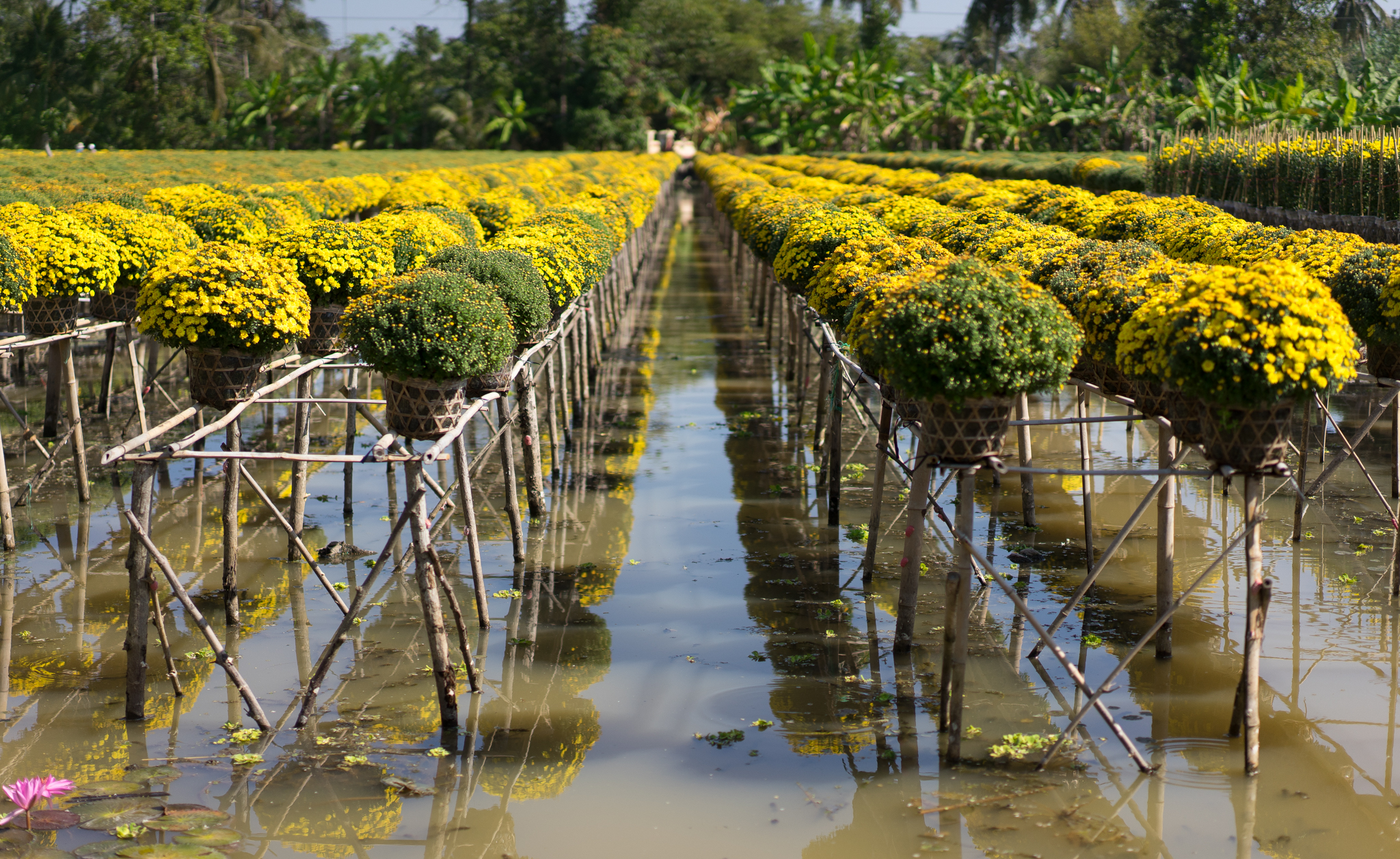
Flowers here are grown on high trellises, below is the water surface
Sa Dec flower garden is home to many beautiful flowers such as the raspberry chrysanthemum, tiger chrysanthemum, gerbera chrysanthemum, petunia, auspicious, marigold, ten o'clock flower, coconut flower, multiflora, purple evening primrose, pink willow, firecracker shell. In particular, there are about 50 rose varieties for export.
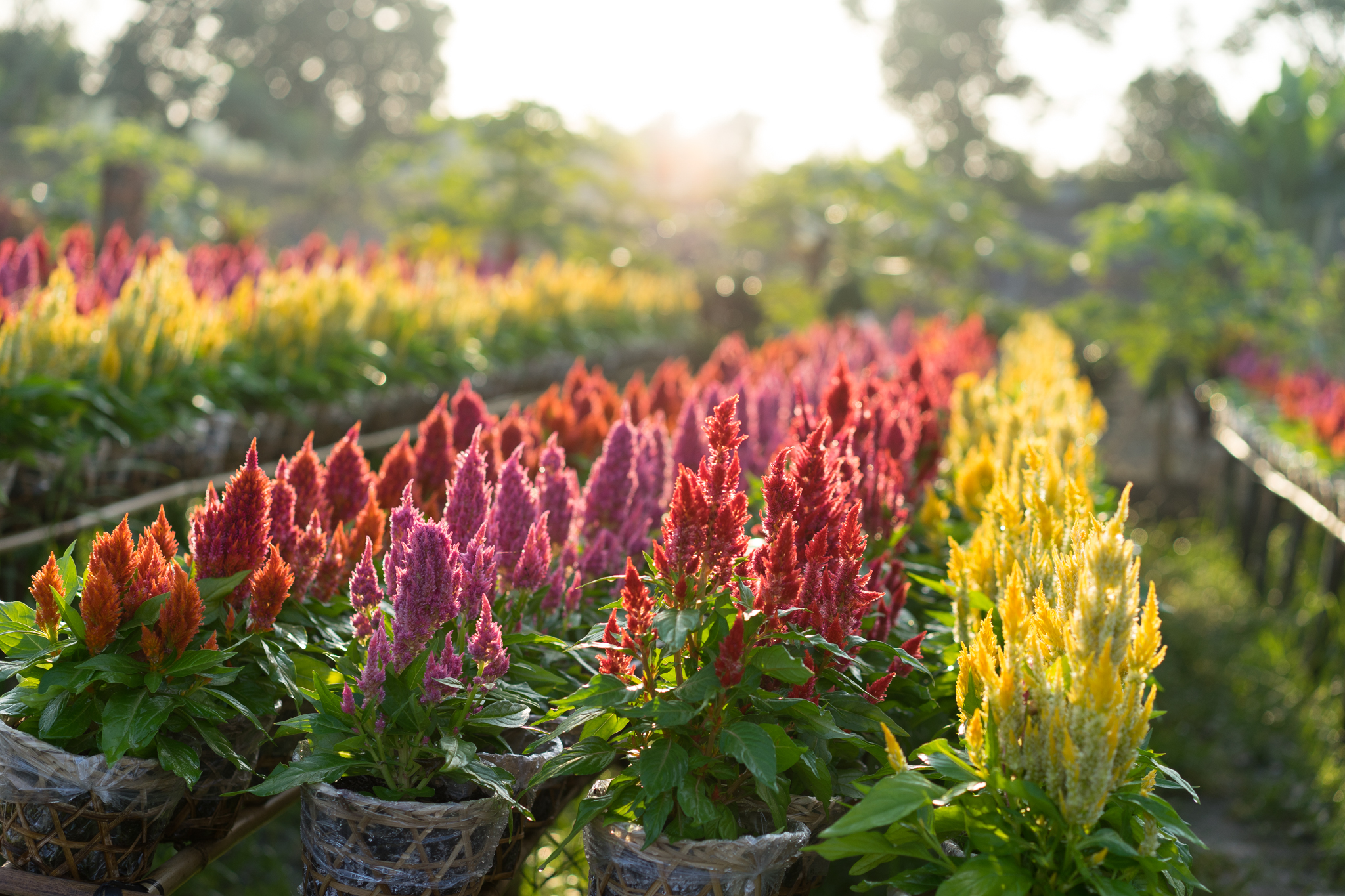
There are many enchanting flowers in this village
This village is also famous for its ornamental plants, some rare and precious plants that are nearly a hundred years old, in addition to very simple and familiar plants such as star fruit, areca nut, fig, and apricot tree. Thanks to meticulous and talented green thumbs, flowers from artisans have become ornamental plants with beautiful and strange shapes.
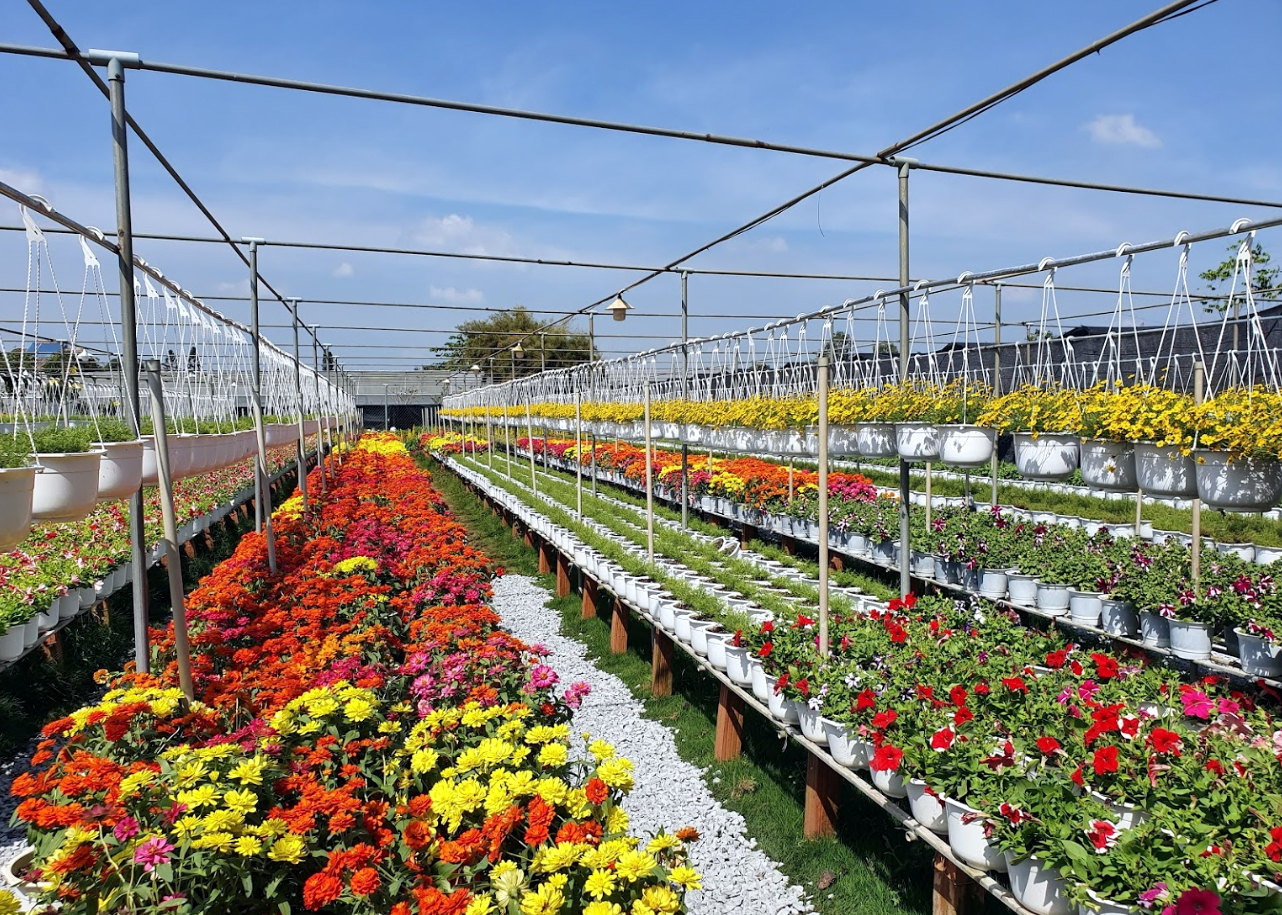
This is the largest ornamental flower garden in the Mekong Delta
Van Nien Tung in particular is a trendy plant that gardeners humorously classify as the "king" of ornamental plants in the South. From the species Son Tung, Ngoa Tung, Ho Phach Tung, and Japanese Tung, to Kim Quyt, Nguyet Quoi, Yellow Apricot, and Thuy Mat, the artisans have constantly created, forming a world of art that reflects human shapes, containing profound art and philosophy.
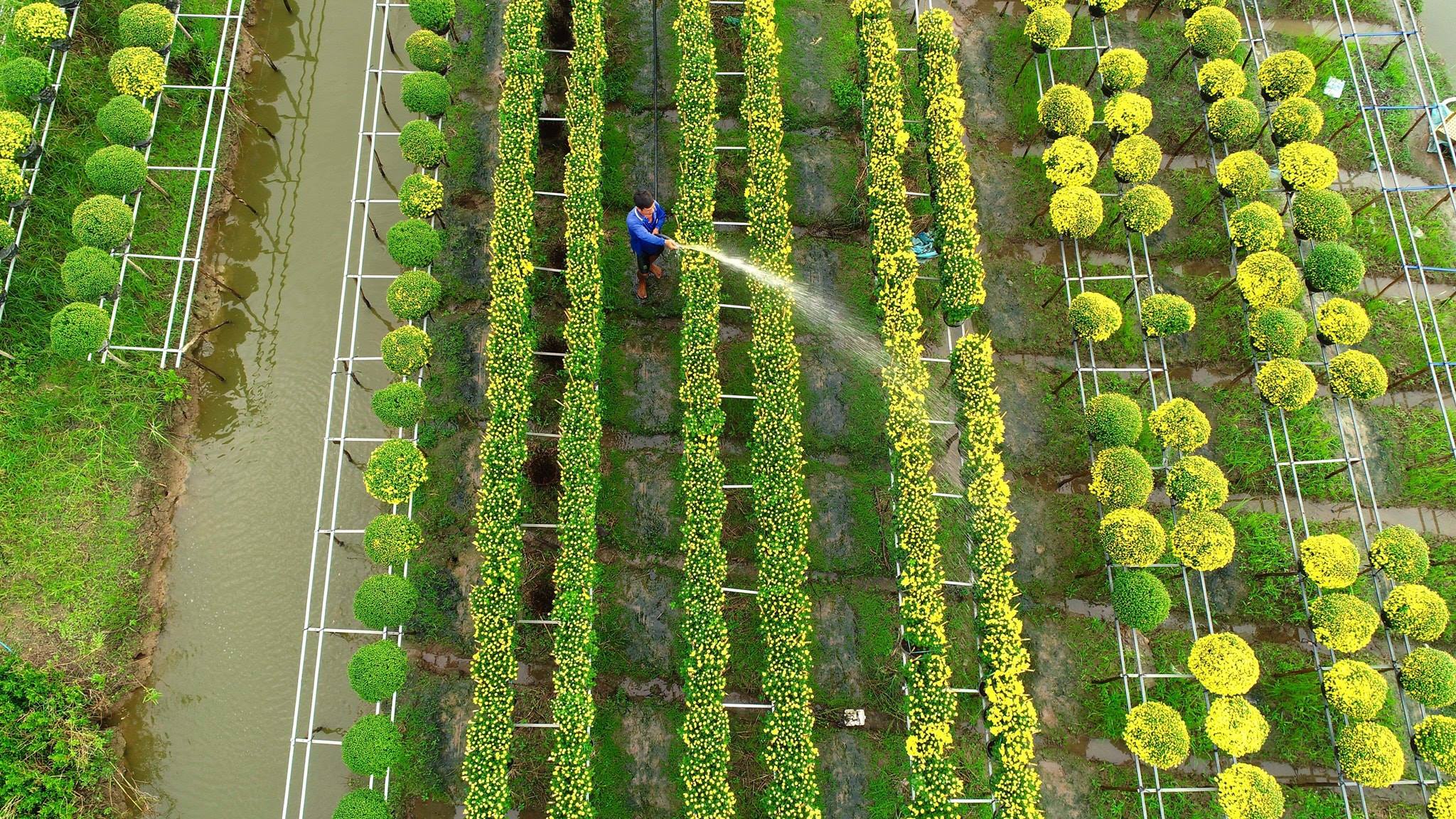
Sa Dec flowers are now not only consumed domestically but also exported abroad
With many years of experience and scientific and technical progress, Sa Dec ornamental flowers are now not only present in the Mekong Delta provinces but also exported to countries in the region such as Laos, Cambodia, and Thailand. Orchids, China... Therefore, this place has become a familiar place for flower connoisseurs.
The best time to visit Sa Dec Flower Village
Coming to visit Tan Quy Dong flower village in Sa Dec, no matter what month of the year you can admire the flowers and take magnificent photos. Especially in spring, the air is cool and flowers begin to bloom. The whole flower village is filled with the vivid colors of thousands of blooming flowers. This is a tourist destination you cannot miss in Sa Dec Dong Thap every Tet holiday.

Near the Lunar New Year is the time when the flower village is at its most beautiful
Tourists visiting Sa Dec flower village need to pay attention to the time because, after the 23rd day of the 12th lunar month, almost all gardeners have delivered flowers to other provinces and cities. Therefore, to see the true beauty of the flower village, you should take the time to visit before December 23 (Lunar calendar).
How to get to Flower Village
From Ho Chi Minh City, traveling to Sa Dec Flower Village is quite easy, on convenient national highways you can take a bus, car, or motorbike to get here. Sa Dec is only about 140km from Saigon with nearly 3 hours of travel. Go to Mien Tay bus station to buy a bus ticket from Saigon to Sa Dec. There are many bus companies and they all depart every hour, so you don't need to worry about the bus's running time. Reputable bus companies are Phuong Trang, Phu Vinh Long, and Loc Dien. The average ticket price ranges from 120,000 VND to 160,000 VND.
If you are in Hanoi or Da Nang because the distance is quite far, the best means of transportation is by plane, you should book tickets early to get cheap prices. The stop you should fly to is Can Tho instead of Saigon. Because Can Tho is only 40km away from Sa Dec.
Visit Sa Dec Flower Village
The main axis is the Sa Nhien - Cai Dao flower road, more than 2km long with thousands of ornamental flowers, all types, colors, and fragrances. Guests can choose to walk, take a tram, or rent a motorbike taxi or motorbike to visit.

The view from the Flower Village viewing deck
The most noticeable difference between Sa Dec flower village and other flower villages is that the flower beds are planted on high trellises, the bottom is flooded and flower growers have to wear boots or use small boats to care for or pick flowers. According to flower growers here, this helps save costs because most of the flower growing land is renovated rice field land, easily flooded due to low terrain.

During the flood season, farmers use canoes to weave between flower beds to care for them
This place also attracts tourists with Sa Dec flower village cafes with wide open spaces, eye-catchingly decorated with dinghies, buggies, monkey bridges, and thatched tents filled with lovely flowers.
At the beginning of the street is the Flower Village Assembly Hall, with a consultation counter, explanations about Sa Dec flower village, and introduction of specialty products, and souvenirs.
Currently, some households have designed their flower gardens into interesting Homestay tourist destinations such as Frog Flower House, Rose House, and Phong La Vent, where visitors can learn more deeply about Sa Dec Flower Village and spend the night experiencing life with the homeowner. Listening to artisans introduce the stages of growing and caring for different types of flowers and looking at how the farmers personally take care of each flower cluster, you can understand how much hardship they have gone through to produce such brilliant flowers. You may also go to the market with the homeowner and cook delicious local dishes such as chopped dough soup, banh xeo, fermented fish hotpot, and duck cooked with fermented tofu.
According to local people, from the full moon of December (the 12th lunar month), Sa Dec flower gardens begin the harvest season for the traditional Tet holiday.
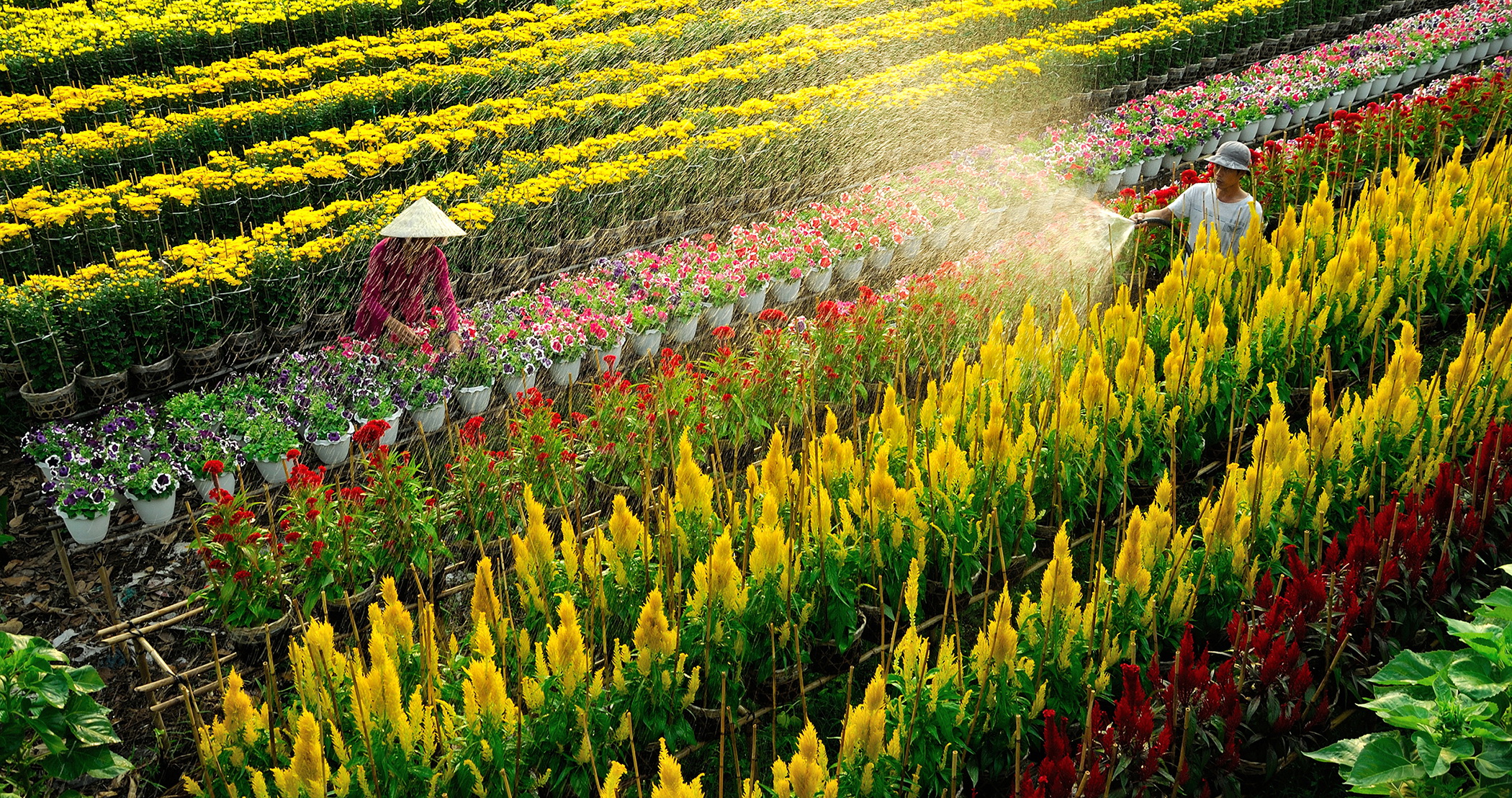
Many flowers are in bloom
The atmosphere is bustling throughout the area, with convoys of vehicles rushing to transport ornamental flowers, then hurriedly going everywhere. Along the riverbank, on the wharf, and under the boats, there are also busy flower markets on the days leading up to Tet.

Farmers are busy harvesting flowers for Tet
The small alleys around the village are also filled with ornamental flowers. In the garden, flower pots are blooming, arranged in long rows on bamboo trellises, forming brilliantly colored carpets. Farmers are busy cutting branches, trimming leaves, taking care of each flower pot, and preparing to take to the market. These days, many tourists come to visit Sa Dec flower village in the spring, making the picture of Dong Thap tourism brighter. It can be said that Sa Dec ornamental flower village has become a poetic spring flower festival of the Southwest region at the end of the year.
Tips on traveling to Sa Dec Flower Village
- The flower road of Sa Dec Flower Village Tourist Area is up to 2-3km. So prepare a good pair of walking shoes.
- You should wear ao dai or beautiful shirts to take Tet photos with thousands of flowers here, you will definitely have many beautiful photos here.
- The weather in the West is quite sunny, you should prepare an umbrella, hat and sunscreen.
- People visiting the flower garden should be careful not to step on the flowers.
- Remember to buy a few flower pots to give as gifts to relatives. Flower prices here are very cheap and there is absolutely no price gouging. After buying, you should ask how to take care of the flowers.
Source: thamhiemmekong.com